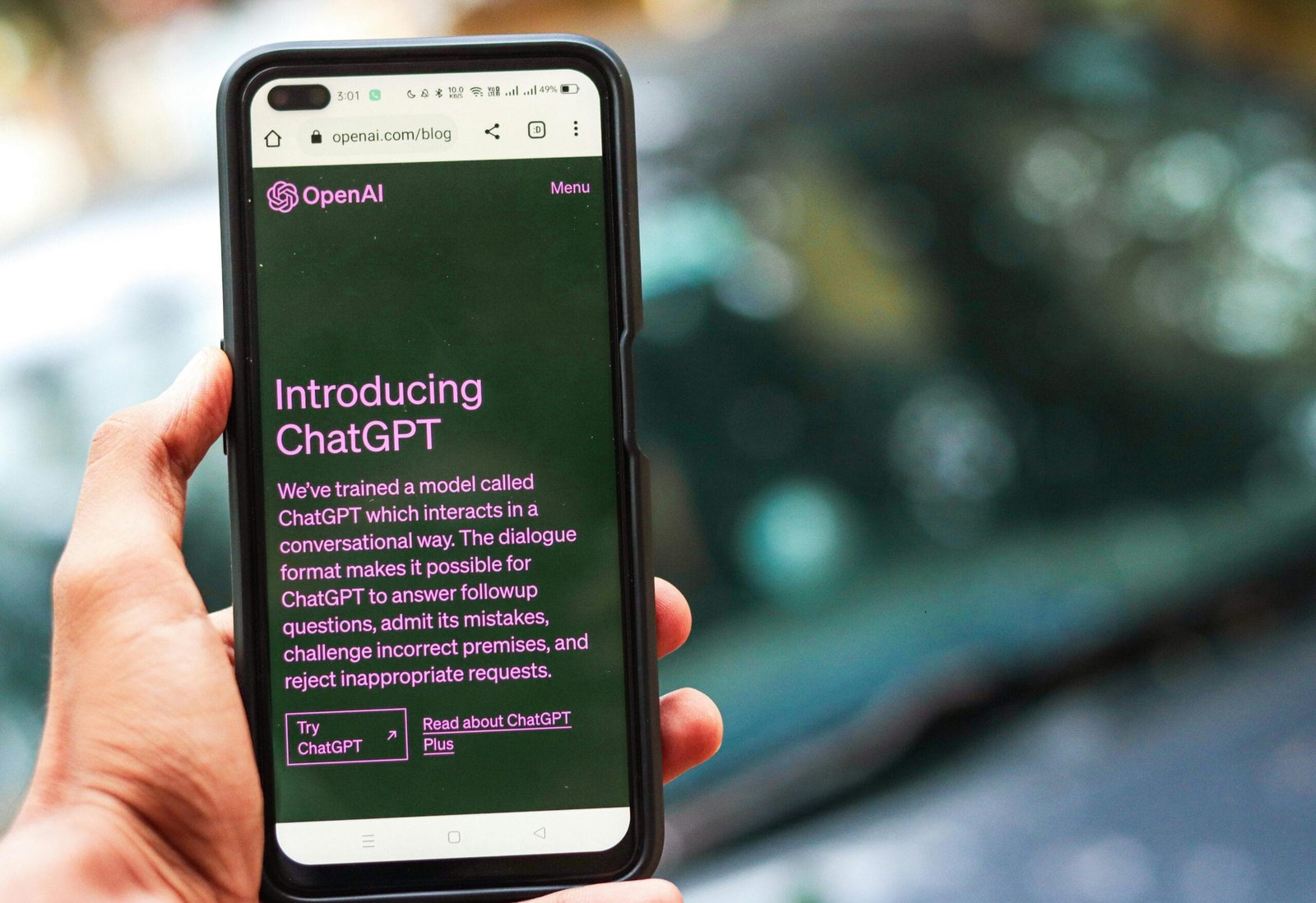Have you ever imagined what it would be like to teach a machine to talk? It’s a process both fascinating and intricate, as it requires an understanding of not only language but the very nature of communication itself. As technology increasingly becomes a part of daily life, the role of an AI Chatbot Trainer becomes ever more significant. In this discussion, we’re going to casually stroll through the world of AI chatbot training, illuminated by the perspective of Figma and Sketch mockup design. Let’s wander through this digital landscape together, demystifying a world where artificial meets human hesitance and brilliance.

Understanding the Role of an AI Chatbot Trainer
The role of an AI Chatbot Trainer may seem sci-fi at a glance, but it’s deeply human in essence. You’re ultimately shaping how machines communicate with us, how they understand us, and, in turn, how they serve us. This process involves training and fine-tuning AI chatbots to better engage with users in a meaningful way.
What Does an AI Chatbot Trainer Do?
Your role as a chatbot trainer is multifaceted. It combines linguistics, programming, and a deep understanding of user experience. Primarily, you guide chatbots through learning processes, shaping their conversational abilities, and optimizing them to handle diverse dialogues. You create responses, script dialogues, and continuously refine these based on user feedback. It’s about facilitating better interactions through constant iterations and improvements in dialogue accuracy and relevance.
Skills You Need
To effectively train chatbots, certain skills are pivotal. You should possess a blend of technical and creative abilities. A fundamental understanding of AI and natural language processing (NLP) will serve you well. You’ll also need strong analytical skills to assess chatbot interactions and improve them. Additionally, creativity comes into play when curating engaging and natural dialogue, ensuring that interactions remain human-like and relatable.
| Skill Set | Description |
|---|---|
| Technical Skills | Understanding of AI, NLP, and machine learning |
| Analytical Skills | Ability to assess interactions and improve dialogue |
| Creative Skills | Craft engaging and realistic conversations |
The Journey of a Chatbot Conversation
Have you ever thought about what makes chatbot conversations feel effortless or awkward? As an AI Chatbot Trainer, you orchestrate the flow of dialogues, ensuring that every interaction mirrors natural human conversation.
Core Components of Chatbot Conversations
Every successful chatbot conversation rests on three key components: context, intent, and response. Context involves maintaining the relevance of the conversation. It’s the background setting of the dialogue, which ensures responses are coherent and accurate. Intent refers to understanding what the user actually wants. Is it a question, a request, or merely information sharing? Lastly, response is about crafting suitable replies that align with both the intent and context.
Fine-Tuning Interactions
Your task extends beyond the initial training. You continuously fine-tune interactions, ensuring bots do not just answer, but do so wittily and appropriately. This means collecting data on user interactions, analyzing them for patterns, and improving the chatbot’s ability to handle these effectively. Your goal is to reduce friction and make conversations feel seamless, just like with another person.
The Intersection of AI Chatbot Training and Design
Training chatbots doesn’t happen in a vacuum. It intertwines beautifully with design elements, particularly with tools like Figma and Sketch. These platforms are quintessential in conceptualizing user interfaces that complement chatbot interactions.
Designing Chatbot Interfaces
Designing a chatbot interface demands empathy and foresight. Through tools like Figma and Sketch, you visualize how conversations play out on a screen. These mockups help in testing various interaction paths, making sure that the dialogue not only sounds right but looks right too. You’ll sketch layouts that anticipate user needs, ensuring clarity and ease of use.
Figma vs. Sketch: Designing for Chatbots
Both Figma and Sketch offer unique strengths. Figma’s collaboration features make it ideal for teams, allowing simultaneous work on interface designs, which is invaluable for real-time brainstorming and testing. Sketch, on the other hand, shines with its vast plugin ecosystem, offering flexibility and extensions to enhance the design process.
| Tool | Key Features | Best Use Case |
|---|---|---|
| Figma | Real-time collaboration, cloud-based platform | Team-based projects |
| Sketch | Extensive plugins, intuitive design tools | Detailed design enhancements |
Enhancing User Experience Through Design
Consider what makes an interaction with technology delightful. It all boils down to the experience—how smooth, intuitive, and engaging it is. Your aim as a designer is to enhance this experience within chatbot interactions.
Crafting Journey Maps
User journey maps are pivotal. They chart out how users interact with the chatbot over time, identifying their needs, emotions, and possible frustrations at each step. These maps will guide your design decisions, as they highlight areas for improvement and innovation.
Emphasizing Accessibility and Inclusivity
In the digital age, designing for accessibility and inclusivity shouldn’t be an afterthought but a fundamental consideration. Your designs should accommodate various users, including those with disabilities. Considerations like text-to-speech compatibility, alternative text for imagery, and clear, high-contrast visuals make a difference. Inclusivity embraces cultural variations, ensuring language and expressions are respectful and universally understandable, which further impacts how chatbots are trained to respond.

Challenges in AI Chatbot Training
It’s not always a straight path when it comes to training AI. Challenges arise — some are technical, others ethical. But understanding these challenges is crucial for a chatbot trainer, as it helps mitigate potential issues.
Overcoming Technical Hurdles
One common challenge is handling the ‘unknowns’. Users can often be unpredictable, asking questions outside a chatbot’s training scope. This requires constantly updating and retraining models, ensuring robustness against unexpected queries. Plus, there’s the challenge of integrating AI systems with existing user databases and systems seamlessly.
Navigating Ethical Concerns
Ethically, training chatbots involves ensuring conversations are devoid of biases. This requires diligently reviewing datasets and training parameters so the bot’s responses remain neutral and fair. It’s about creating technology that respects user privacy and upholds trust.
Future of AI Chatbot Training and Design
What lies ahead in the world of chatbot training and design? As technology evolves, so do the possibilities and expectations of AI chatbots.
Trends on the Horizon
The future looks toward more personalized, context-aware chatbots. Advances in AI personalization will allow bots to remember past interactions and preferences, offering more tailored experiences. There’s also a growing trend toward ‘emotionally intelligent’ bots, capable of recognizing and responding to user emotions empathetically.
Shaping the Future
You play a pivotal role in shaping this future. By consistently refining techniques and staying abreast of technological advancements, you’ll contribute to creating chatbots that are not just useful but genuinely engaging. Enhanced user interfaces and seamless design integration will become ever more crucial, ensuring users feel understood and valued.

Conclusion
Embarking on the journey of an AI Chatbot Trainer intertwined with design principles is a path filled with opportunities to innovate and enhance modern communication. You hold the key to transforming user interactions, making them more human-like and meaningful. As you continue this venture, keep in mind the delicate balance between technology and humanity, always striving for interactions that not only inform but also delight.

